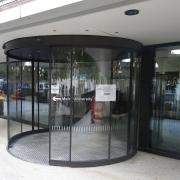For years, school restrooms have been viewed merely as functional spaces, often underestimated in the grand scheme of priorities. Here, Sophie Weston, Marketing Manager at Geberit, sheds light on why it’s time to take school toilets seriously.
Washrooms, being one of the busiest areas in a school, require thoughtful design with a clear layout, ample space, and a welcoming feel. Choosing the right products, such as wall-hung ceramic furniture, can give school bathrooms a clean and practical appearance, and create a welcoming feel.
While hygiene concerns have always been a key discussion point, the COVID-19 pandemic highlighted the importance of cleanliness, yet it didn’t address issues related to bathroom anxiety and, in turn, overall well-being.
Targeting bathroom anxiety
Bathroom anxiety is a real concern, with national children’s charity ERIC estimating that up to four children in a class of 30 experience anxiety related to using school toilet facilities. One-third of parents also share worries about hygiene standards at their children’s schools.
With this in mind, innovations like touchless technology, such as Twyford’s Sola Infrared taps, reduce multiple touchpoints in high-traffic areas. Such advancements not only enhance hygiene but also contribute to a clutter-free and streamlined design, reinforcing the perception of a clean space among students.
Beyond innovative technology, design features like Twyford’s Sola rimless ceramic toilet ranges and TurboFlush technology eliminate tricky corners and hard-to-reach areas around the pan, addressing concerns about hygiene and cleanliness.
Meeting high standards
The significance of the washroom space in schools is undoubtedly felt by many pupils. Now is the time to offer students a space where they feel safe, hygienic, private and comfortable which can contribute to a positive and productive learning experience.
Adhering to high standards and regulations is fundamental in the education sector, and schools can now make more informed decisions about sanitaryware and washrooms to control measures and minimise risks.
It’s time to shift the perception of the critical role toilet spaces play in schools. Washrooms can have a huge role to play in how pupils view and feel about their school and, as a result, promote health and wellbeing throughout the facility.
For additional information about Twyford Bathrooms, please visit: www.twyfordbathrooms.com









